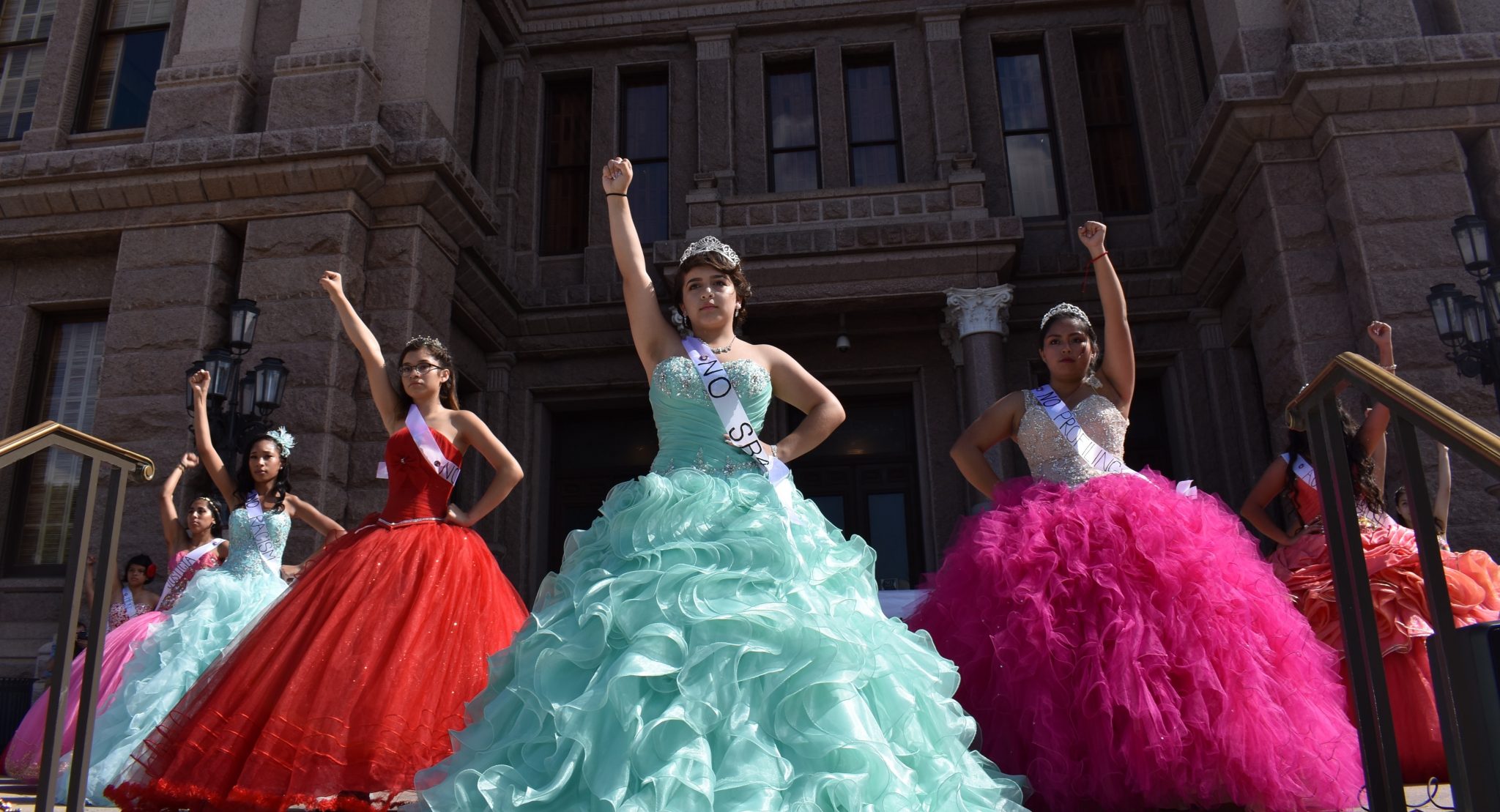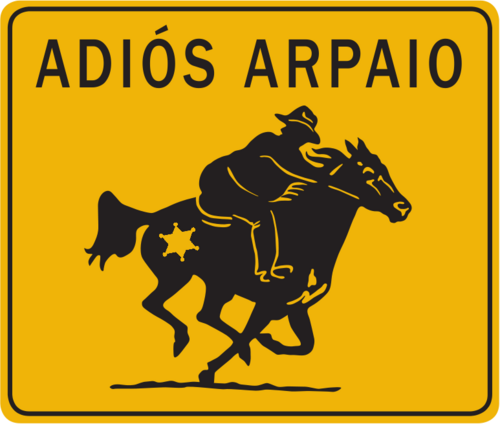

Quinceañeras at the Texas Capitol (Photo by Jolt/Used with permission)
By Cristina Tzintzun Ramirez and Alejandra Gomez
Many reporters and pundits have failed to report on one of the most important trends this election—the massive growth in the Latino vote that will reshape the political landscape of our country for years to come. Latinos now make up the largest non-white voting block in the country and, according to a post-election analysis by journalist Juan Gonzalez, 20.6 million voted in 2020, a 65% increase from the 2016 election. Many journalists have failed to report on this massive shift in participation. Instead, they have zeroed in on a minority of Latino voters who cast ballots for Trump. In the process, they have missed the signs of a political tsunami that is building among young Latino voters and the stories of a new generation of Latino leaders who are working to reshape both political parties.
As organizers leading Latino voting rights organizations in two of the country’s largest and newest battleground states —Arizona and Texas— we want to set the record straight. While many news outlets have claimed Trump did extremely well with Latino voters, the facts show otherwise. The Biden-Harris ticket won the Latino vote by an estimated margin of 43 points nationwide. That being said, Democrats cannot take the Latino vote for granted and they will need to invest more deeply and earlier in the Latino vote. Campaigns that parachute in neighborhoods two weeks before an election fail.
Organizing Gets the Goods
Both of our organizations were founded in the wake of attacks against Latinos and immigrants by elected leaders who sought to scapegoat our community for political gain. Established Demoratic Party members saw us as an easy target. They presumed incorrectly that most of us wouldn’t or couldn’t vote. What they failed to account for was the fact that every year, 100,000 and 200,000 Latinos turn 18 in Arizona and Texas respectively, making up nearly 30% and half of those new age eligible voters in these states. Also, Texas and Arizona have one of the highest racial generation gaps in the country, meaning the younger Latino population that is turning out like never before looks very different than the older mostly white voters who have long determined the outcomes in key races in our states.
If demographics were destiny, our states would have been controlled by Democrats years ago. But lack of investment in the exact voters needed to flip our states kept them solidly red. When we began organizing, we found Democratic leaders and candidates often complained about low voter turnout from Latinos and young people. Instead of engaging and speaking to these voters, they spent most of their time and money searching for illusive swing white Republican voters. Our organizations, LUCHA and Jolt, launched as volunteer-run projects on shoestring budgets that operated out of organizers’ homes, but quickly grew and began to show Democratic leaders that there was a recipe for success to engage and mobilize young and Latino voters.
Well before the Trump era, the hateful rhetoric and racist agenda that propelled him to the presidency was alive and well in Arizona. In fact, Arizona served as a laboratory for some of the extreme anti-immigrant policies, which would later become central to the Trump presidency. Elected officials like Sheriff Joe Arapio spent years using local law enforcement to harass and arrest members of the Latino community and was even ordered by federal courts to stop these illegal acts of racial profiling and held in contempt for refusing to comply (he would later be pardoned by President Trump).
And in response to Arpaio’s most blatant attack on our community —SB 1070— young Latinos started mobilizing. At LUCHA, we worked seven days a week. We often began our days at 4 a.m. with a vigil at the state capitol and spent the rest of the day registering voters at grocery stores, churches, laundromats and gas stations until midnight. In 2011, we aimed our efforts first at defeating the authors of SB 1070 and beating back anti-immigrant legislation—including one bill that sought to make it impossible for undocumented families to rent a home or even have running water to bathe and drink.


By 2020, the veteran organizers of LUCHA had defeated anti-immigrant elected officials like Arpaio across the state and mobilized—determined to deny Trump a path to victory through Arizona. We continued door knocking even during the pandemic and shifted resources into culturally competent digital strategies that helped lead to 75% of the Maricopa County Latino community voting for Joe Biden, in the end defeating Republican Senator Martha McSally and delivering Arizona for Biden.
Democratic strategists or party officials who seek to replicate what happened in Arizona nationally must understand mobilizing Latino voters requires investing in year-round organizing. Arizona didn’t flip overnight. It took years of hard work that defeated candidates at the local and state level before we were ultimately able to flip the state for Democratic presidential candidates for the first time in 24 years. It will require this same long-term commitment in Texas to flip the largest battleground state in the country. To reshape the Texas political map requires supporting and investing in grassroots efforts focused on young Latino voters.
In Texas, the week after the 2016 election Jolt was founded, and within months, our organizing efforts started to bear fruit. We grew quickly, forming chapters across the state. We activated young people who felt under attack by laws like SB 4, Texas’ now infamous “show me your papers” law. Our activities focused on harnessing the power of Latino culture and pride, including organizing young Quincañera girls in their dresses to dance and protest against anti-Latino and anti-immigration legislation. Efforts like this reached millions of Americans and brought in legions of new volunteers who began registering and mobilizing thousands of voters.
We moved from protesting to building political power, launching #Poderquince—a statewide campaign that called on young Quinceañera girls across Texas to use their sweet 15 birthdays as a platform to pledge to vote when they came of age and organize others in their community to vote. It was through these creative efforts that we saw young voter turnout start to climb. Texas continues to lead the nation in youth voter turnout.
Gender Matters
Black women have long-served as the backbone of the Democratic Party, working to ensure high turnout and participation in the broader African American community. Likewise, Latina women are the ones driving change in the Latino community, and there are significant voting differences in how Latinos vote based on gender. In Arizona, Biden won 73% of the Latina vote compared to 68% of Latino men, and in Texas 75% of Latinas voted for Biden compared to 59% of Latino men. Our organizations have focused our efforts on Latina women, with the knowledge that Latinas are the ones driving up Latino turnout and consistently voting for progressives.
As Latinas leading in our community, we know how critical it has been to uplift the power of Latina women. At Jolt, we invested and trained young Latinas, like 24-year-old Esther Ramos, who in 2016 was the only person eligible to vote in her family. After seeing Trump elected, she became determined to change things. She started with her parents, both long-time permanent residents, convincing them to become American citizens with the sole purpose of voting. Esther didn’t stop there. She registered voters at her church and school, and became a trusted voice to dozens of community members about when, where and how to vote.
“People know I keep up with things happening politically. Lots of people are just so busy they want to be able to just ask someone they trust about how to vote. I am that person for people in my community,” she said. Likewise, Arizona’s historic flip is due to young Latinas like 20-year-old Blanca Collazo, who led a team of 200 volunteers that made nearly three million bilingual phone calls to Latino voters in Arizona.
While Latinos vote in high margins for Democrats, we are clear that Democrats should be careful to see these votes as a full endorsement of the party itself. Many Latinos strongly dislike the Republican Party, but that doesn’t necessarily translate into strong affection for the Democratic Party. In Texas we found that just 32% of young Latino voters identified as Democrats, while only 13% said they were Republicans. Fifty percent said they were independents or said they “didn’t know” which party they preferred. To harness the full power of the Latino voters, Democrats cannot take them for granted. While a clear majority (67% Latinos in Texas voted for Biden-Harris), Democrats did lose Latino voters in South Texas. These shifts, while not reflective of the Latino vote in the state overall, show how critical both year-round organizing and investment —even in traditional Latino Democratic strongholds— are.
Conclusion
The Latino vote not only makes up a critical voting block in some of the country’s largest battleground states but one in four American Gen Z-ers are Latino. In 2020, Latino voter participation crossed a critical mark, for the first time in U.S. history, two-thirds of those eligible to vote went to the polls. Previous to this election, the majority of eligible Latinos didn’t vote. The Democratic party failed to take the U.S. Senate, their majority in the House dwindled, and the midterms elections are just around the corner. The question is simple: will the Democratic Party make the necessary investments in the power of young Latina women to chart a new course for our country?
***
Cristina Tzintzun Ramirez, is the founder of Jolt, Texas’ leading Latino youth voter mobilization organization and former U.S. Senate candidate. Twitter @cristinafortx.
Alejandra Gomez, co-executive director of LUCHA, has dedicated her life to a commitment to social justice and community empowerment through grassroots mobilization. Rooted in her family’s immigration struggle, Gomez was the field manager for the Adiós Arpaio, led the organizing efforts in the fight for DAPA and expanded DACA at United We Dream National Network, and worked for Organizing For America. Twitter: @Gomez_Alex07.



[…] a large turnout among Latino voters in Arizona is credited for helping Biden win the state in 2020, many were surprised to see Latinos in Texas’s Rio Grande Valley vote for Trump at a […]